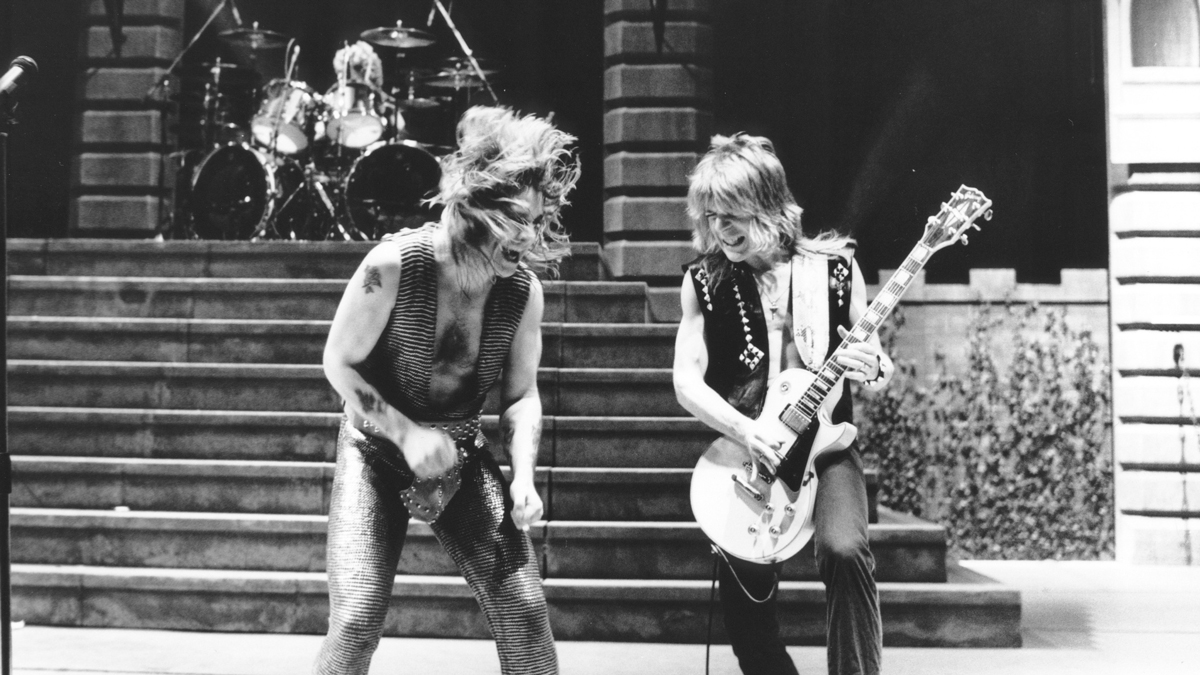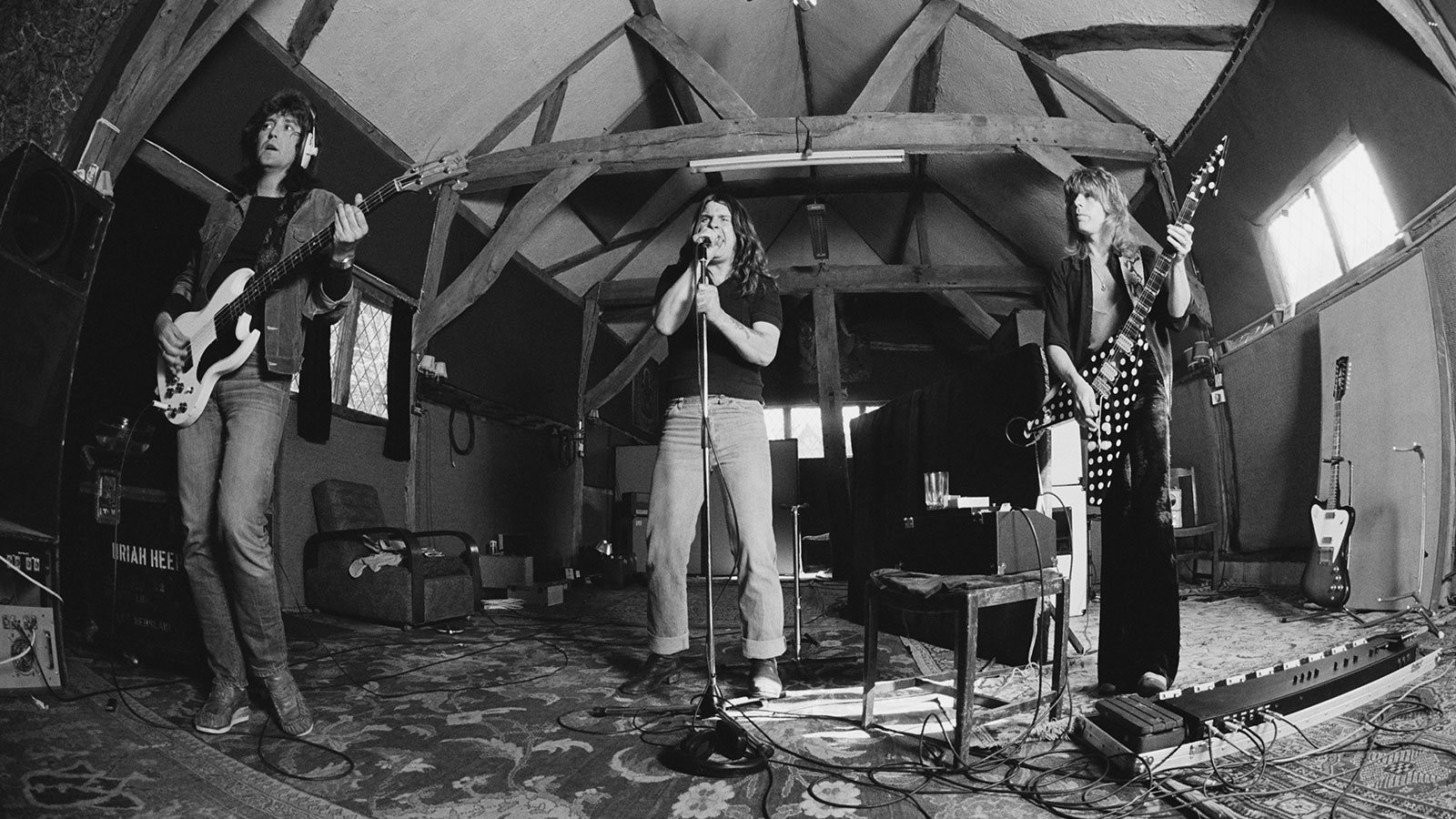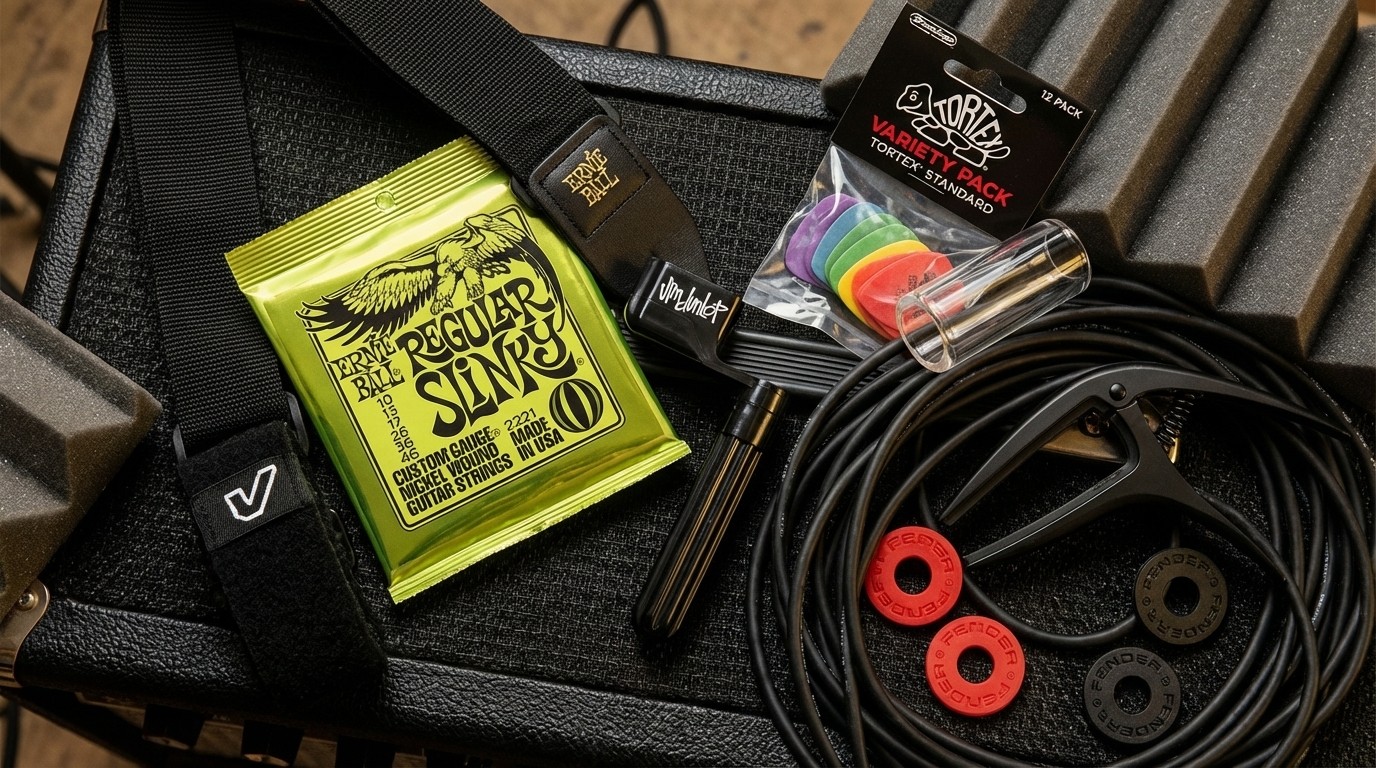Behind the scenes of Blizzard of Ozz, the album that launched Ozzy Osbourne's solo career and made Randy Rhoads a guitar god
Producer Max Norman details the recording of Ozzy's solo debut, and explains why “Randy was the sort of guy you didn’t argue with – you just tried to keep up”

The following article was originally published in Guitar World magazine's March 2006 issue.
Ozzy Osbourne’s Blizzard of Ozz and Diary of a Madman albums are heavy metal landmarks. Released in 1980 and 1981, respectively, they jump-started his solo career and are the best of the precious few studio recordings that guitar virtuoso Randy Rhoads made in his short lifetime.
While Blizzard was in the planning stages, Ozzy considered several producers for the project, including Queen studio guru Roy Thomas Baker and Hendrix and Led Zeppelin veteran Eddie Kramer. As recording got underway at Ridge Farm, a residential recording studio in the English countryside, engineer Chris Tsangarides was charged with laying down tracks for Ozzy, Randy, bassist Bob Daisley and drummer Lee Kerlsake. Soon after, Ozzy and Tsangarides had a falling out, and the job of ushering Blizzard of Ozz into existence was handed to Max Norman.
A veteran British knob twirler, Norman had played a role in building Ridge Farm, at the time a brand-new facility, and had performed live sound engineering for Daisley and Kerslake’s prior bands, Rainbow and Uriah Heep, respectively. An affable bloke and consummate pro, Norman had the discipline and studio craft to meet the demands of Rhoads’ highly technical playing style, but his wild streak meant he could also run with Ozzy. Since then, he’s survived many of Osbourne’s mood swings and lived to tell the tale.
“Oh, Ozzy’s fired me many times,” he says, laughing. “He fires everybody.”
Norman, however, usually was called back. After Blizzard, he went on to make several more albums with Ozzy, including Diary of a Madman, Randy Rhoads’ final studio recording.
Did Randy give you any direction as to how he wanted his guitar tracks on Blizzard of Ozz to sound?
All the latest guitar news, interviews, lessons, reviews, deals and more, direct to your inbox!
“He told me what he liked, basically. He didn’t really have a lot to say. I’d have to keep changing settings and looking at him for his reaction. He wouldn’t play much if he didn’t like the sound, and if he liked what it sounded like, he’d play a lot more. A lot of musicians are like that.”
Randy was the least seasoned member of the band. Ozzy had been in Black Sabbath, Bob Daisley was in Rainbow and Lee Kerslake in Uriah Heep. Did Randy defer to their greater experience?
“I don’t really think it affected him. He did what he wanted. I think everybody was in awe of Randy’s compositional talents. His changes were great. He was the sort of guy you didn’t argue with – you just tried to keep up. He was very on the ball. If Ozzy didn’t like something, Randy could turn it around pretty quickly, but there were very few things Randy did that Ozzy didn’t like.”
Ozzy speaks a lot about how patient Randy was with him.
At some points, Ozzy would come in and say, ‘It’s taking forever. We don’t need all these tracks.’ And I’d be like, ‘Well, that’s what Randy wants.’ And Ozzy would usually come around
“Yeah. Sometimes Ozzy would say, ‘That’s crap. What are you doing that for?’ And Randy would say, ‘It’s gonna be okay.’ He could placate Ozzy and keep doing what he wanted. He was pretty confident. At some points, Ozzy would come in and say, ‘It’s taking forever. We don’t need all these tracks.’ And I’d be like, ‘Well, that’s what Randy wants.’ And Ozzy would usually come around.
“Remember that Blizzard of Ozz was being done on Ozzy’s money. It was before he had a record deal [as a solo artist], so we didn’t have a lot of time to hang around in the studio experimenting with stuff. It was all the money Ozzy had in the world, I think, for four weeks of recording. I remember I had to mix the album very quickly.”
What was Randy’s behavior in the studio generally like?
“Randy didn’t talk a lot in the studio; he just worked. To do solos, he’d say, ‘I’m going to need to listen to this a lot of times. You can just go to the pub for a couple of hours.’ I’d make him a rough stereo mix of the backing track on 1/4-inch tape. I’d record 15 or 20 passes of the solo section backing tracks, one after the other, starting maybe 15 seconds before the solo and ending 20 seconds after it.
“Randy’s amps were set up in a stone room underneath the control room; they were facing into the stone steps that led down to the stone room. Randy would stand at the top of the steps with two big 15-inch Tannoy playback monitors on either side of him, and he’d blast solos over the backing track. Sometimes he’d use headphones instead of the Tannoys, but it was the same basic principle. I’d go to the pub for a couple hours, and when I got back Randy still usually wasn’t ready.”
What was he fiddling with all that time?
“Oh, just standard guitar player stuff. He’d find something he liked, then he’d try something totally different for a while, then he’d come back to his original idea. Once he knew what to do, he’d slam down a good one and then we’d try to get it doubled up. He actually tripled most of them.”
Did you do any comping of solos? Use one line from take 11, for example, and another line from take 24?
“No. There was very little of that. We were only working with one 24-track machine; we weren’t syncing up a second 24-track. So by the time we were doing solos, we didn’t have a lot of tracks to spare. And in those days it would be almost impossible to punch in [rerecord part of an existing take by switching into record mode, and out again, while the tape is moving] – unless it was an easy punch, like if Randy had left a gap somewhere in the solo. Later on, I got into much more technical means of constructing a solo.”
What was Randy’s guitar rig for the sessions, and how did you record it?
“His amp setup was a Marshall stack, with two 4x12 cabs. We had four Shure SM57s right over the voice coils on four of the speakers – two speakers on the top and two on the bottom, catty cornered. The center of the microphone was right on the voice coil edge, on a tangent, facing right at it.
“Then we had a [Neumann] U82 sitting about eight feet in front of the stack, at the top of the steps and another U87 about 20 feet further back from that. Most of the time all those mics would be mixed down to one track. But sometimes we’d print stereo tracks if we wanted to keep the ambience separate.”

Did he use basically the same guitar rig for both Blizzard of Ozz and Diary of a Madman?
“Yes, and it was a pretty advanced rig for the time, I suppose. He’d read somewhere about using the Variac [a variable power supply that can lower supply voltages and cause power tubes to saturate at lower levels]. He had a 100-watt Marshall amp, and we dropped the voltage down to 90 or 92 volts. That smokes up the distortion, gives it a creamier edge. And of course a lot of the effects came from his pedalboard, the ‘chip pan’. [Ozzy gave this name to the setup because it created so much hiss and noise that it sounded like French fries – which the British call “chips” – sizzling in a pan.]”
His pedals were just an MXR chorus and things like that, right?
“Yeah. MXR chorus, Korg stuff, a wah… all that stuff. It was a real menace because it would make so much noise.”
Did you have to use a noise gate on it to cut down on extraneous noise?
We tried to gate Randy’s pedalboard. You had to gate it to stay sane
“Well, we tried to gate it. You had to gate it to stay sane. Mostly we gated it on the return end of the signal chain, so it wouldn’t chop the sound up. Gating is a pretty messy business. In the end, I basically had to ride the signal in and out manually using faders on the mixing console.”
What about outboard effects on the guitar?
“Back then, the main thing we had in the studio was the AMS 1580 digital delay, which was the first, good long digital delay. I remember it went to 408 milliseconds, which was really something in those days. On Blizzard of Ozz, a lot of the echoes on Randy’s guitar are 408 milliseconds long.
“On the second album [Diary of a Madman], we had a Lexicon 240 with new chips in it. We used that for some of that spacey clean guitar stuff on the album, with long, 30-second decays. We doubled those guitar figures into it. That makes it kind of spooky.”
How did you record Randy’s acoustic guitar for the song Dee?
“That was close miked with an AKG 451 a little southwest of the soundhole. Then I threw a [Crown] PZM [Pressure Zone Microphone] on the floor in front of the acoustic guitar. I actually had a couple of PZMs on the floor. It was quite a big room with a carpet, and Randy was sitting in the middle.”
Was it difficult to record Ozzy’s vocals?
Ozzy didn’t like the way his voice sounded on his own. So he’d always double it
“No, it was just very time-consuming. The way he does vocals is one line at a time. He’d sing the first line of the verse, then we’d roll back and do it again. We’d do that about four or five times until we got one that he liked. Then we’d double it. You wouldn’t necessarily get a tight double, like with Randy’s guitar, but you’d get one that had a good intrinsic sound to it. Ozzy didn’t like the way his voice sounded on his own. So he’d always double it. Later on, he got away from that, but he did it in Black Sabbath and he did it on those first few solo records.
“So it would take six or seven hours to try and get a vocal out of him. And it was always a question of trying to get a vocal out of him before he collapsed. Because he’d be drinking scotch or doing blow. Toward the end of a session, I’d punch in and I wouldn’t hear him singing. One time I soloed up the track and I heard this dribbling sound. Ozzy was pissing on the studio carpet. He hadn’t even bothered to sing. Another time I punched in and he was throwing up. I guess I should have kept those, huh? But Randy wasn’t like that. Ozzy was the one that really got out of it.”
Randy wouldn’t take a drink in the studio?
“No. Or maybe only after the session. One of his fingers had a very long fingernail, and maybe he’d have a tiny bit of cocaine on there, maybe at the end of the week. He was a very straight guy. He was into playing. He was a pretty boring kid, really. Pretty squeaky clean. I saw him do coke maybe three times that I can think of. In those days, that was like being a Christian. Everybody else was crazy. So Randy was a pretty good kid. He loved going to his classical guitar lessons, too. I think that’s where he got some of those chord changes. He wasn’t a bad boy at all.”
In a career that spans five decades, Alan di Perna has written for pretty much every magazine in the world with the word “guitar” in its title, as well as other prestigious outlets such as Rolling Stone, Billboard, Creem, Player, Classic Rock, Musician, Future Music, Keyboard, grammy.com and reverb.com. He is author of Guitar Masters: Intimate Portraits, Green Day: The Ultimate Unauthorized History and co-author of Play It Loud: An Epic History of the Sound Style and Revolution of the Electric Guitar. The latter became the inspiration for the Metropolitan Museum of Art/Rock and Roll Hall of Fame exhibition “Play It Loud: Instruments of Rock and Roll.” As a professional guitarist/keyboardist/multi-instrumentalist, Alan has worked with recording artists Brianna Lea Pruett, Fawn Wood, Brenda McMorrow, Sat Kartar and Shox Lumania.

